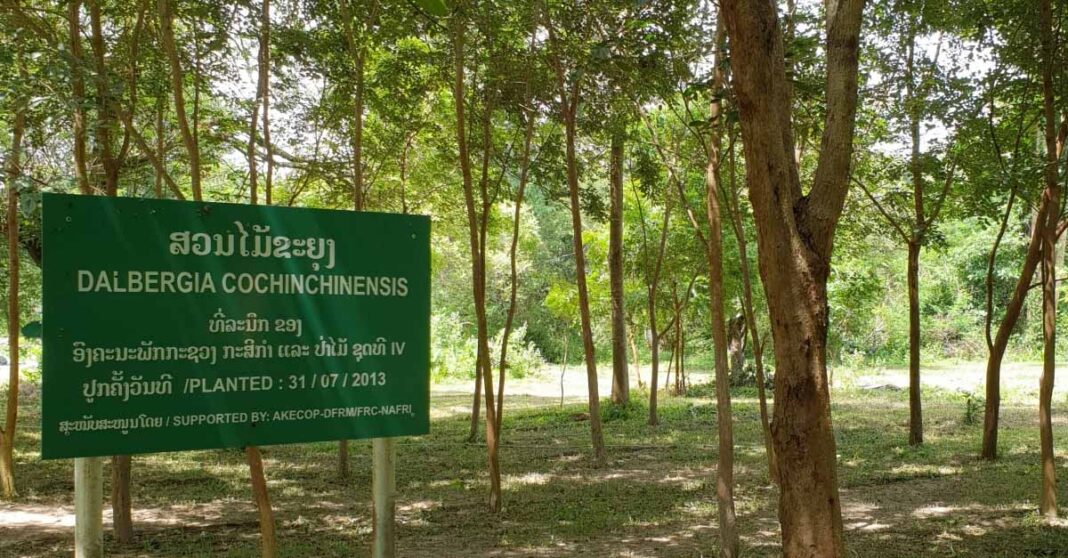The extremely valuable Asian Rosewood tree faces several threats to its survival, according to a new study, published last month in the scientific journal Biological Conservation.
Rosewood (or “Dalbergia”) is native to the Greater Mekong Subregion, including Laos, Thailand, Vietnam, and Cambodia.
It is the “most lucrative form of illegal flora trade, exceeding ivory in terms of trade value.”
The study, which used mapping to track threats against the tree, identified five main risks. The first and most serious threat to the tree’s survival is overexploitation, a result of its high market value and the prevalence of illegal logging.
The other most serious threats researchers identified are fires and the conversion of the trees’ habitat (such as for farming). Overgrazing, or the depletion of plants by livestock, was another threat scientists found, as was climate change.

By mapping these threats, researchers were able to identify areas where conservation will be pivotal in ensuring the species’ survival.
They also made recommendations for how such conservation efforts can be achieved, suggesting that cooperation between countries and addressing corruption will be crucial to restoring Asian Rosewood’s population.
Seed collection and seedling production are two areas where researchers found a potential for local communities to gain income and employment from the tree without driving it even closer to total extinction.



